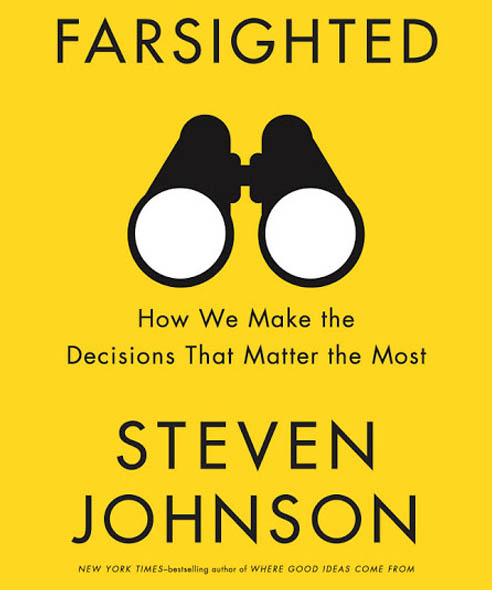Reviewed by Susan Fader, susanfader@faderfocus.com
Fader & Associates, Teaneck, NJ
Decision-making can be challenging. Finding the Holy Grail that will make the process easier, while producing the right decision, has led to a tsunami of books on this subject. Think of Malcolm Gladwell’s Blink, Daniel Kahneman’s Thinking Fast and Slow, and Dan Ariely’s Predictably Irrational.
So do we really need another book on decision-making? If you have read Gladwell’s, Kahneman’s, Ariely’s, or myriad other books on decision-making, is there anything to learn from another book on the subject? If you haven’t read any of the recent popular books on decision-making, should Farsighted be a book you read on decision-making? The answer is definitely a resounding yes to all of the above.
It is human nature to generally want quick and easy solutions, so it is not surprising that the popular focus has been on the types of decisions where flash judgment and gut impressions are the overriding drivers. For Johnson, decision-making has a more complex side. He believes there are many decisions that are complicated and that “the craft of making farsighted choices—decisions that require long periods of deliberation, decisions whose consequences might last for years, if not centuries…is a strangely underappreciated skill.” In Farsighted he focuses on why we need to up our decision-making skill set, and he successfully shares specifics on how to do this, e.g., why you should probably revise many of your current decision-making techniques, such as how you approach pro/con lists.
For Johnson, planning plays an integral and many times overlooked role in many of the important decisions we make in both our personal and professional lives. These types of decisions require skills distinctly different from System 1, instinctive decision-making approaches. He feels many people currently wrongly validate whether a decision has been made properly because we “have the tendency to emphasize the ‘results’ of good decisions and not the process that led to the decision itself.” Farsighted is a master guide to a multitude of processes that will enhance your decision-making abilities.
The author is a cultural historian, a lover of literature, and someone who is a master storyteller. In his almost dozen previous books, he shows that he is an expert at taking complex subjects and solid scientific data and distilling them into fascinating reads with clear and actionable takeaways. (I have been a fan of Johnson ever since I read his The Ghost Map: The Story of London’s Most Terrifying Epidemic—and How it Changed Science, Cities, and the Modern World.)
While Johnson uses a myriad of stories and examples to illustrate the multiple approaches that can be used to make long-term decisions, I found his weaving in of three distinctly different events throughout the chapters of the book to be an extremely effective and interesting way of sharing and demonstrating both the approaches and techniques that can be used for farsighted decisions:
- Mission to find Osama Bin Laden—be prepared to be in awe of the multitude of decision-making techniques the planners used that enhanced their ability to analyze, evaluate, and look for alternative options that were key in both determining where Osama Bin Laden was hiding and in planning the successful raid of his compound. Find out why the only thing they overlooked was a tape measure and how that was resolved. Also learn why using the red team approach is a significantly better approach than employing the classic devil’s advocate one.
- George Elliot’s Middlemarch—get in the main characters’ heads to better understand the process of weighing different options and outcomes. You will feel like you are watching a ping-pong match.
- Filling in of Collect Pond in Lower Manhattan in the early 1800s—to learn why applying a System 1 approach to a problem that required a farsighted decision approach was absolutely the wrong way to go. If a farsighted decision process had been used, Lower Manhattan may have avoided the serious problems that arose from filling in the pond and Manhattan might still have Collect Pond, which would have meant a park larger than Central Park.
Farsighted is an engaging and very well-written book that will directly impact how you approach decision-making. It is not a hard decision… go out and get yourself a copy!


Be the first to comment